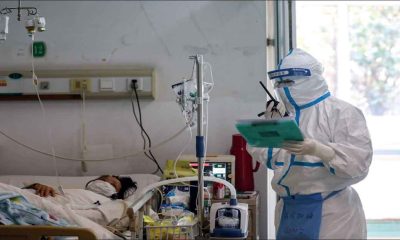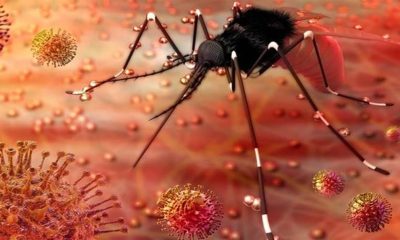India News
Study links uneven urbanisation with high risk of cholera outbreaks
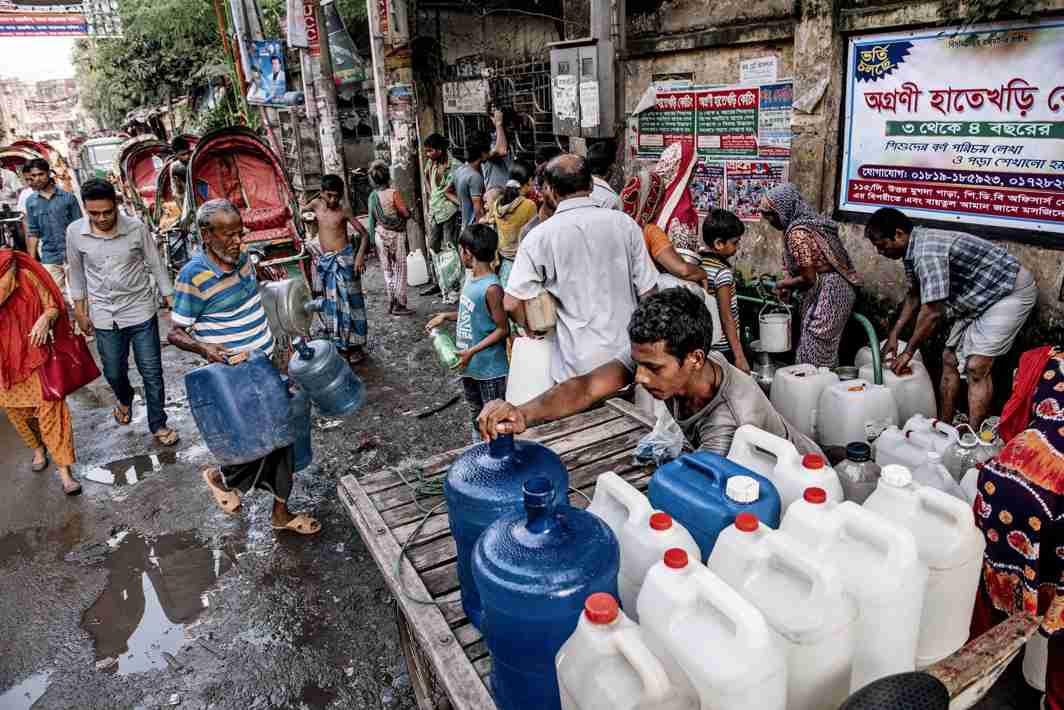
By Sunderarajan Padmanabhan
Families living in rural areas of districts at higher risk of cholera as funds for water and sanitation infrastructure are diverted to urban areas, say experts
New Delhi: Higher levels of urbanisation are no guarantee for preventing the outbreak of cholera. In fact, a new study by Indian and international experts seems to indicate that higher urbanisation also leads to an increased risk of a cholera epidemic since funds for water and sanitation infrastructure are often allocated disproportionately within an ‘urban’ district, with its rural areas receiving only a pittance.
In other words, the study blames the uneven allocation of funds for water and sanitation infrastructure within districts – urban centres getting more funds than rural areas within a district that is otherwise categorised as ‘urban’. The use of improved sanitation facilities in urban areas in India has increased to 63 per cent as of 2015 while it has gone up to only 28 per cent in rural areas.
“It appears that families living in rural areas of districts with more cities are at higher risk, perhaps because the resources in these districts are allocated to the urban areas, neglecting the rural areas of the district,” the researchers have observed in their study in journal PLOS One.
The study has also found that there seemed to be large scale underreporting of cholera cases. There is significant variation between actual number of cases being reported and ground reality based on the various risk factors. For instance, the study says, Uttar Pradesh did not report any case despite having areas that qualified as ‘high risk’ zones. The reasons for underreporting are limited disease surveillance, inadequate laboratory capacity especially at the peripheral health care centres, and reluctance on part of authorities to acknowledge the problem for fear of societal repercussions.
The findings are based on district level data of cases reported between 2010 to 2015 from the Integrated Disease Surveillance Programme, and socioeconomic characteristics and coverage of water and sanitation obtained from the 2011 census report. Researchers used this data to perform spatial analysis to identify cholera hotspots, and employed a modeling method called ‘zero-inflated Poisson regression’ to identify the factors associated with cholera and predicted case counts at district level.
A total of 27,615 cholera cases were reported during the six-year period. As many as 24 out of the 36 states in the country had reported cholera during these years. Of them, 13 States were classified as endemic. In terms of districts, out of the 641 districts in the country, 78 districts in 15 states were identified as “hotspots” based on the reported cases. However, 111 districts in nine states were identified as “hotspots” from model-based predicted number of cases.
Overall, one-fourth of the districts in India reported cholera and 90 districts of them have been identified as hotspots, making cholera is a widespread major public health problem in the country. It is major problem in West Bengal, Karnataka, Chhattisgarh, Punjab, and areas of Himachal Pradesh adjoining Punjab. In addition, most districts in Karnataka have been identified as cholera hotspots. The risk for cholera in a district is linked with poor sanitation and drainage conditions and urbanization level in the district.
The research team included Mohammad Ali and David A.Sack of Department of International Health, Johns Hopkins Bloomberg School of Public Health; Nirmal K. Ganguly, Sanjukta Sen Gupta, and Nisha Arora of Policy Center for Biomedical Research, Translational Health Science and Technology Institute; Pradeep Khasnobis and Srinivas Venkatesh of National Center for Disease Control; Dipika Sur of Indian Public Health Association; and Gopinath B. Nair of World Health Organization.
(This article is from a syndicated feed provided by the India Science Wire)
2024 Lok Sabha Elections
Smriti Irani takes a swipe at Rahul Gandhi for calling Amethi his home but contesting Lok Sabha elections from Wayanad
Smriti Irani criticised the Rahul Gandhi for changing his families and said they have seen people changing colours, but for the first time changing families is being witnessed.
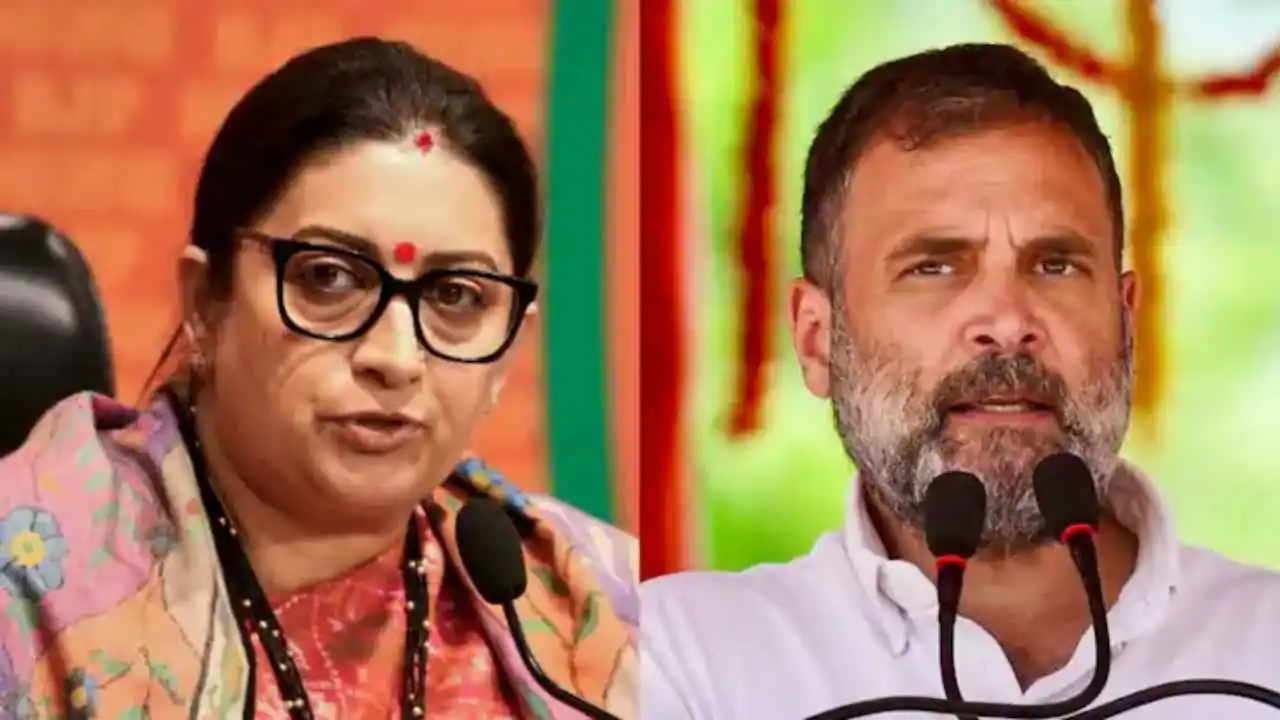
Union Minister Smriti Irani took a swipe at Rahul Gandhi on Saturday during a rally in Uttar Pradesh’s Amethi. While addressing the public rally, Irani said Rahul Gandhi spoke about his relations in Amethi and then he went to Wayanad where he declared the Kerala seat as his home as he filed for his nomination for the Lok Sabha elections.
Smriti Irani, who will be contesting her Amethi seat yet again, criticised the Rahul Gandhi for changing his families and said they have seen people changing colours, but for the first time changing families is being witnessed. The Union minister urged the people of Amethi to cast their votes on May 20, the day when Amethi goes for elections. She talked about the benefits of voting for BJP and said, the poor will get free ration for five years, farmers will get Rs 6,000 every month, and will get Rs 5 lakh every year under the Ayushman Bharat scheme.
Irani further added that Congress on the other hand has declared that it will calculate the wealth of the people if voted to power. She took a swipe over Congress candidates and said the grand old party is yet to announce its candidates for two key constituencies in Uttar Pradesh – Amethi and Raebareli, which have historically been the Congress’s stronghold. The BJP leader said that now that the polling in Wayanad has concluded, the Congress candidate will arrive in Amethi, but will first visit the Ram Temple.
She slammed Congress for rejecting the invitation to the Ram Temple Pran Pratishtha and said they rejected the invitation to the Ram temple Pran Pratishtha, now they will go to the Ram temple as they believe that this will get them votes in the ongoing Lok Sabha elections which means now they will go to the extent of betraying god as well.
2024 Lok Sabha Elections
Lok Sabha election 2024: Nearly 50% voter turnout recorded in second phase till 3 pm
The constituencies going to polls today include all 20 Lok Sabha seats in Kerala, 14 in Karnataka, 13 in Rajasthan, and others spread across different states.
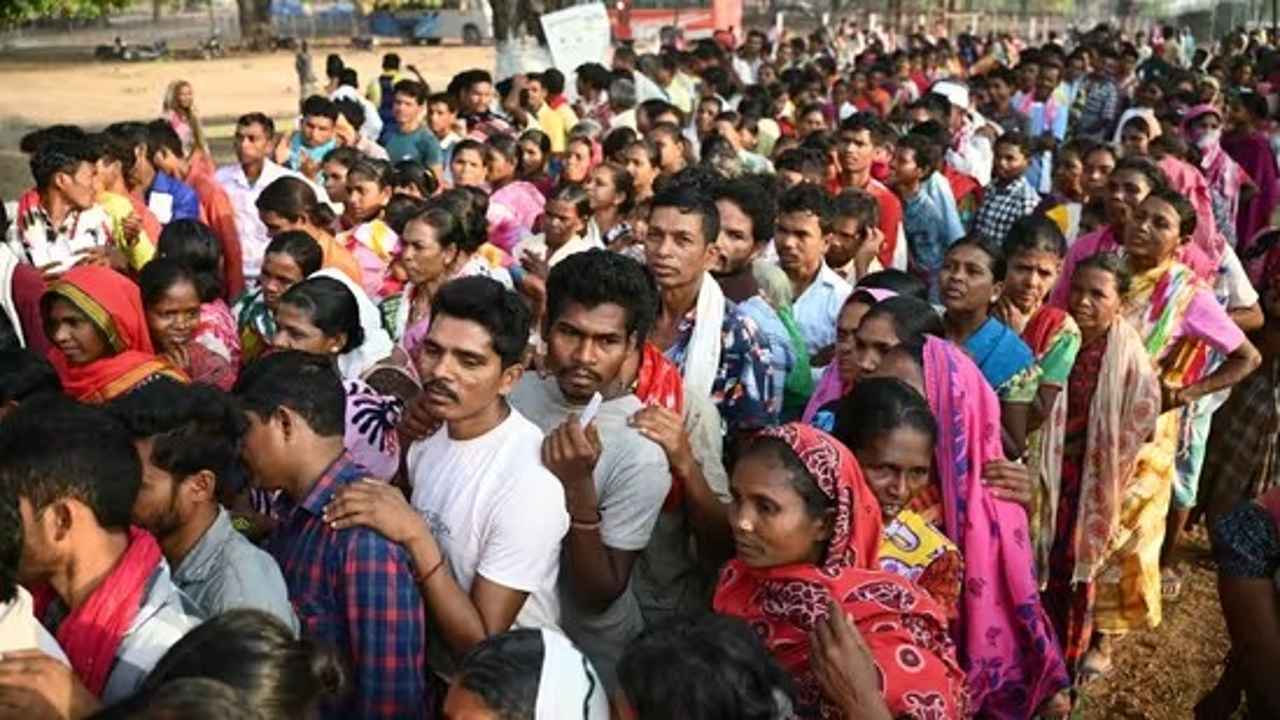
In the second phase of Lok Sabha elections 2024, over 50% of voters were registered in 13 states and the UTs till 3 p.m. 65% of voters participated in the first round of the Lok Sabha elections.
The 18th Lok Sabha elections are currently in their second phase, with voting for 88 seats taking place across 13 states and union territories. There are more than 1,200 people running for office, four of them are from outside Manipur.
Union minister Rajeev Chandrasekhar, BJP members Tejasvi Surya, Hema Malini, and Arun Govil, Rahul Gandhi and Congress leader Shashi Tharoor, DK Suresh, the brother of Karnataka Deputy Chief Minister DK Shivakumar, and former chief minister HD Kumaraswamy are among the notable contenders for the second phase.
In 2019, the NDA had won 56 of the 89 seats and the UPA 24. Six of these seats have been redrawn as part of the delimitation exercise.
The first phase of the seven stages of the elections took place on Friday, including 102 seats spread across 21 states and Union territories. Voter turnout was about 65.5% in the first phase, according to the reports.
In biggest festival of democracy, people from all walks of sector took part in it. A video went viral where former India captain and current Indian team head coach Rahul Dravid and former India player and head coach Anil Kumble were seen standing in line to cast their vote.
Meanwhile, voting started at 7 a.m. and will end at 6 p.m. The Election Commission has extended voting hours for those who are in line by an hour. According to Election Commission figures, the first two hours saw a 9.3% voter turnout throughout the 88 constituencies. By 9 am, Kerala had recorded 8.52%, Karnataka 9.21%, and Madhya Pradesh 13.82%.
In this phase, there were about 15.88 crore eligible voters, comprising 5.929 third-gender electors, 8.08 crore males, and 7.8 crore women. 3.28 crore young voters, aged 20 to 29, are among them; 34.8 lakh of them are first-time voters.
2024 Lok Sabha Elections
Lok Sabha elections 2024: 102-year-old man walks to polling booth to cast his vote in Jammu
The lowest voter turnout so far was noted in Ramgarh at 1.53%.
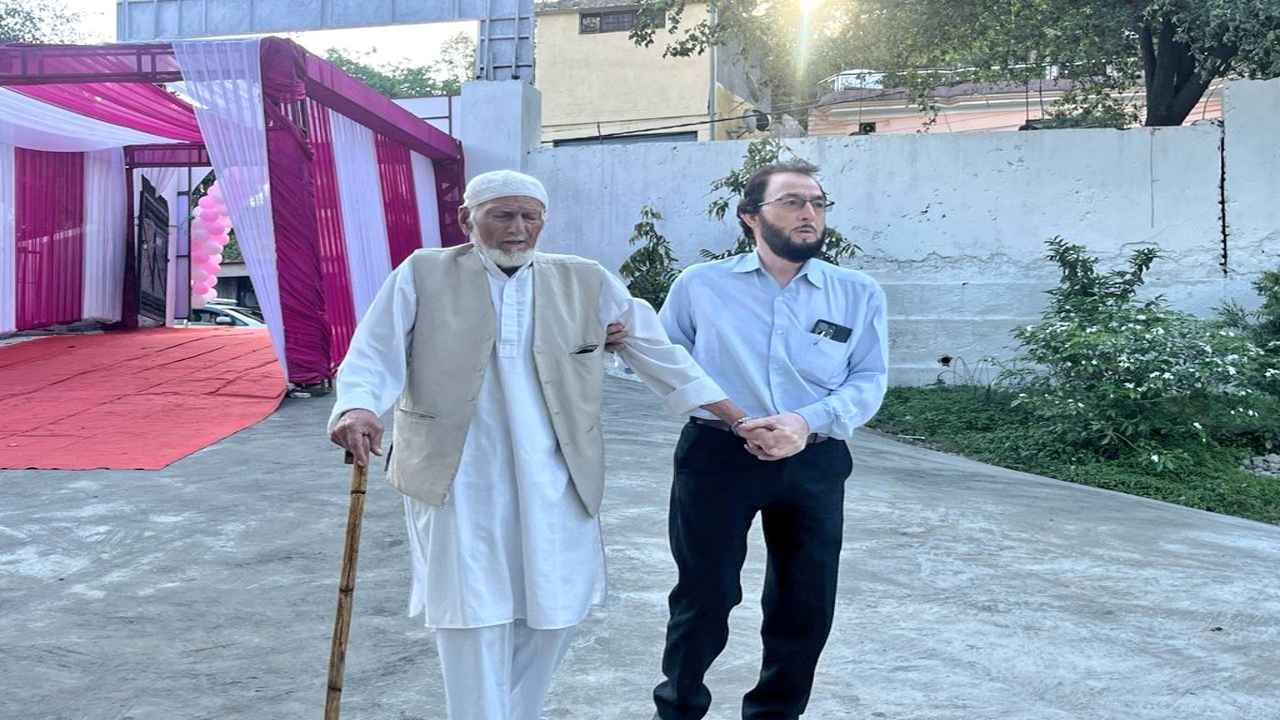
A 102-year-old man showed up at a Jammu polling place to cast his vote in the second phase of the Lok Sabha elections on Friday. Haji Karam Din arrived at the Reasi district polling place in the Jammu constituency with a walking stick in hand and a family member who assisted him with the pre-voting process.
Haji Karam Din, who is 102-year-old, showed his inked finger and posed for pictures outside the polling booth after casting his vote. He said voting at this polling place at this age makes him very happy. He has always cast his vote. Even at the age of 102, this experience is still ongoing, he said.
Reasi district is a part of the Jammu parliamentary constituency, and 22 candidates are up for vote with around 17.81 lakh eligible voters.
BJP’s sitting member Jugal Kishore Sharma is aiming for a third term in office following wins in the elections of 2014 and 2019. Former minister and Congress candidate Raman Bhalla is his main opponent.
Voting in the Jammu-Reasi Lok Sabha constituency began with eager voters showing up at the polling places. Some of them were wearing traditional Dogra attire.
In 2,416 polling places around the constituency, voting got underway at 7 a.m., and 10.39% of the total votes were cast by 9 a.m. In the 2019 Lok Sabha elections, Jammu recorded a 74% voter turnout.
Following the repeal of Article 370 and the division of the former state into two Union Territories five years ago, this is Jammu’s first significant election.
The Akhnoor segment received the highest percentage of votes, 14.24%, followed by Reasi (14.13%), Gulabgarh (13.53%), Shri Mata Vaishnodevi (12.71%), Marh (12.31%), Samba (8.56%), R S Pura Jammu South (8.17%), and Suchetgarh (5.67%), according to the officials. Ramgarh recorded the lowest voter participation of 1.53% so far.
Low attendance was observed in the border areas of the districts of Jammu and Samba till nine in the morning, according to poll data.
The officials said that big lines of voters were observed at several polling places throughout Jammu city. Voters were observed heading towards polling places early in the morning.
-
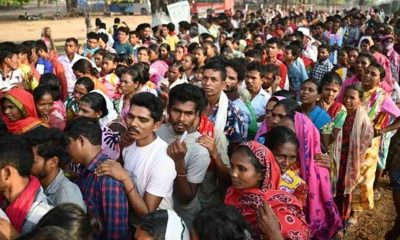
 2024 Lok Sabha Elections22 hours ago
2024 Lok Sabha Elections22 hours agoLok Sabha election 2024: Nearly 50% voter turnout recorded in second phase till 3 pm
-
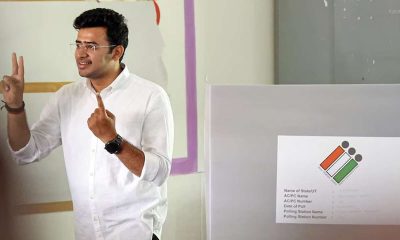
 2024 Lok Sabha Elections20 hours ago
2024 Lok Sabha Elections20 hours agoElection Commission books BJP MP Tejasvi Surya for seeking votes in the name of religion
-

 Cricket news3 hours ago
Cricket news3 hours agoIPL 2024: Punjab Kings beat Kolkata Knight Riders by 8 wickets to chase down highest T20 total
-

 2024 Lok Sabha Elections53 mins ago
2024 Lok Sabha Elections53 mins agoSmriti Irani takes a swipe at Rahul Gandhi for calling Amethi his home but contesting Lok Sabha elections from Wayanad





